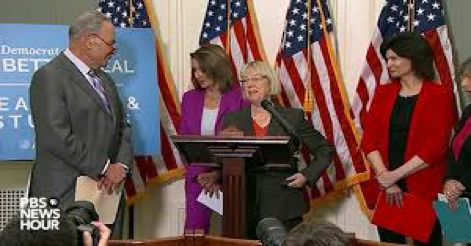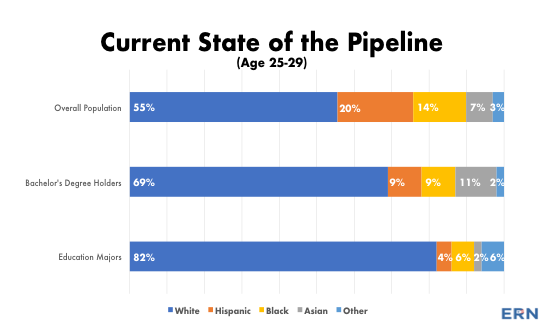This week, Senate Democratic Leader Chuck Schumer and House Democratic Leader Nancy Pelosi announced a new plan to take the tax cuts Congress gave away last year to the top 1% of all earners and repurpose the funds to boost teacher salaries. This is arguably the boldest K-12 education proposal we’ve seen from Congressional leaders in years. Here are 5 things to keep in mind toward truly making this plan a great deal for teachers and at the same time ensuring we deliver a highly qualified and more diverse teaching force to the students who need it most.
1. Dollars and Sense. Schumer and Pelosi propose a funding level of $50 billion over ten years. While that sounds like a lot of money, in a nation of 3.2 million teachers it amounts to just a little more than $1,500 per teacher, per year. Spreading the money around like that would be neither fair to our most underpaid teachers nor effective in helping students and schools with the greatest needs. Fortunately, there are some existing frameworks for informing how to target salary supports fairly and equitably. Two are contained under federal law in the Every Student Succeeds Act (ESSA).
2. ESSA – Equitable Distribution of Great Teachers. Congress repealed, via ESSA, many of the teacher quality provisions previously in place under No Child Left Behind and the Obama Administration’s NCLB waiver regime. It did, however, retain and strengthen one key existing provision around equity. As under the old law, states must address and remedy disparities in the rates at which low-income and minority students are taught by inexperienced and out-of-field teachers. Under the new law, state plans must also address inequities in the assignment of teachers deemed ineffective. Salary differentials, which right now are more the exception than the rule, could be an effective tool in such efforts.
3. ESSA – Real Per-Pupil Spending. Beginning next school year, states are required under ESSA to publicly report actual per-pupil spending for each and every school. Currently, most districts report misleading numbers on school-level spending that use district-wide data that mask real school-by-school teacher salary differences and, in turn, real and inequitable per-pupil spending disparities. States and districts have balked at the cost of “leveling up” per-pupil spending at underfunded schools by increasing salaries and other supports for their teachers. The Schumer-Pelosi proposal, if designed correctly, could offer a new resource that would make it harder for states to shrug off remedying the disparities that the new ESSA reporting feature will undoubtedly uncover.
4. Boosting Teacher Salaries in Rural Areas. Rural areas are often overlooked in federal education policy, and that’s partly because of the limited “blunt object” levers available under existing programs. Increased salaries for teachers in rural schools would be good policy and good politics. A 2003 study by the Rural School and Community Trust found that “Rural districts face a threefold disadvantage: teachers are not compensated as well as other rural professionals [in the health care field, which has much less professional and legal leeway to compromise on quality than the field of education does, compensation is greater in rural areas]; rural states pay less than more populated states; and within states, rural teachers have lower salaries than their suburban and urban peers.” In addition to being good policy, getting rural buy-in on a teacher salary proposal also might be what’s needed to build the broad political coalition it would take for the Schumer-Pelosi plan to make it into law.
5. Teacher Diversity. Professionals of color are even more under-represented, relative to the general population, among education majors than they are among B.A. holders overall (see chart below). One hypothesis, advanced by our friends at the Center for American Progress, has to do with pay: “Much more lucrative and prestigious job choices exist for talented students, particularly students of color. The nationwide average salary for a doctor in general practice is $186,320; for an attorney, it is $133,470. For an elementary or middle school teacher, however, it is only $57,080.” Along with research showing the benefits of a diverse teaching force for students of color, there’s a strong argument for bringing pay incentives to bear in this area.
Additional Reading: Teacher pay can also be an effective mechanism for achieving other policy goals, such as retaining great teachers who might otherwise leave the profession and for offering the level of pay necessary to recruit educators with the knowledge and skills necessary to teach STEM and provide services to students with disabilities and to English Language Learners, for which there are serious shortages in many areas of the country. For more on these and other considerations in teacher compensation, see Education Reform Now’s 5-part infographic brief series “What You Should Know About Teacher Pay.”

